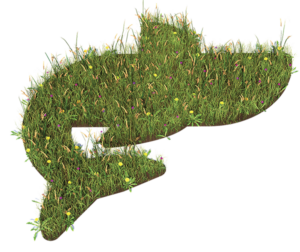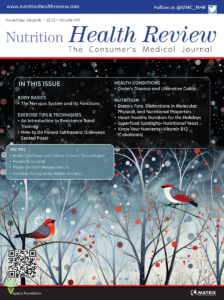 According to the US National Oceanic and Atmospheric Administration (NOAA), sustainable seafood is “fish and shellfish caught for human consumption by fishermen operating under sustainable fishery management systems that conserve fish stocks and the ecosystems that support them.”1 The Magnuson–Stevens Fishery Conservation and Management Act (MSA), first passed in 1976 in the United States, is the primary law that governs marine fisheries management in US federal waters. Its main objective is to foster the long-term biological and economic sustainability of marine fisheries by preventing overfishing, rebuilding overfished stocks, increasing long-term economic and social benefits, and ensuring a safe and sustainable supply of seafood.2 Under the MSA, which defines 10 national standards for fishery conservation and management, the NOAA’s fishing authority—the National Marine Fisheries Service (NMFS)—is able to regulate fish stocks to support the long-term health of the nation’s marine ecosystem.
According to the US National Oceanic and Atmospheric Administration (NOAA), sustainable seafood is “fish and shellfish caught for human consumption by fishermen operating under sustainable fishery management systems that conserve fish stocks and the ecosystems that support them.”1 The Magnuson–Stevens Fishery Conservation and Management Act (MSA), first passed in 1976 in the United States, is the primary law that governs marine fisheries management in US federal waters. Its main objective is to foster the long-term biological and economic sustainability of marine fisheries by preventing overfishing, rebuilding overfished stocks, increasing long-term economic and social benefits, and ensuring a safe and sustainable supply of seafood.2 Under the MSA, which defines 10 national standards for fishery conservation and management, the NOAA’s fishing authority—the National Marine Fisheries Service (NMFS)—is able to regulate fish stocks to support the long-term health of the nation’s marine ecosystem.
The US is considered a world leader in the technology and innovation used to manage commercial fisheries in the US,3 and compliance with the MSA standards ensures that US fisheries will maintain environmental sustainability. That’s all good news, right? Unfortunately, the majority of seafood consumed in the US is imported from other countries; In 2017, the USA was the leading importer of fish and fishery products, strongly suggesting that not all seafood that is available at the grocery store, fish market, or restaurant is derived from sources that comply with the high safety, labor, and environmental standards required of fisheries here in the US. So how can you ensure that the seafood you are buying comes from an environmentally sustainable source? Well, it is a bit of an ambiguous process and requires some detective work, but there a few helpful resources out there that can help guide you on determining which fish is sustainably sourced before you buy.
 NOAA Fisheries
NOAA Fisheries
NOAA Fisheries website provides a wealth of science-based information on how the NOAA and its subsidiaries work with US fisheries to ensure environmental sustainability…Probably way more information than the average consumer would be interested in. But the site does have a detailed search function for hundreds of species of aquatic animals. For each species, the site provides information on current population status, appearance, biology, where the species live, the fisheries that harvest them, how they are harvested, whether they are considered overfished (according to specific locations), what harvest restrictions are in place, and more—in US waters.
 Monterey Bay Aquarium Seafood Watch
Monterey Bay Aquarium Seafood Watch
Monterey Bay Aquarium Seafood Watch is very easy to navigate and provides basic information on sustainable fishing, where seafood comes from, and fishing and farming methods. Their simple, easy-to-use sustainable seafood guide (by region and nationally) is probably the most well known among the various seafood guides available to the public. In their guide, seafood is organized according to four main categories: Best Choices, Certified, Good Alternatives, and Avoid. You can search for a specific species of aquatic animal on their website or app or you can download a much-simplified printable pocket version of the guide to take with you when shopping for seafood or going out to eat.
 Ocean Wise Seafood
Ocean Wise Seafood
Ocean Wise Seafood provides a downloadable Master Seafood List, which groups seafood into 4 categories: Sustainable, Avoid, Under Review (more research needed), and Eco-certified. The website also has a search function for looking up specific fish and for finding local restaurants and Ocean Wise partners that support seafood sustainability.
 Greenpeace
Greenpeace
Greenpeace is probably best known for their efforts to ban commercial whaling, among other things. While they don’t specifically have a guide for selecting sustainable seafood, they have ranked supermarkets, food service companies, and tuna brands according to level of effort these companies put forth to promote seafood sustainability. This might actually be more useful to the consumer than one of the above seafood guides, because let’s face it, it can be difficult, if not downright frustrating at times, to figure out where a fish was farmed, by whom, and under what practices. That information isn’t routinely provided on commercially packaged food labeling. But shopping at a grocery store that figures all that out for you can really simplify things. For example, with assistance from the Monterey Bay Aquarium Seafood Watch program, the Whole Foods grocery store chain was the first national chain to use a color-coded rating of environmental impact of its wild-caught seafood. In fact, Whole Foods is ranked #1 on Greenpeace’s Grocery Store Scorecard.
 Foodprint
Foodprint
Foodprint is about food sustainability in general, not just seafood. But it offers some great tips on how to eat sustainably, including cooking, shopping, eating out, and growing your own food, as well as provides useful resources, such as a seasonal food guide.
Sources
1. National Oceanic and Atmospheric Administration. National Marine Fisheries Service. Fishwatch. https://www.fishwatch.gov/sustainable-seafood/faqs. Accessed 24 Oct 2021.
2. United States Department of Commerce. National Oceanic and Atmospheric Administration National Marine Fisheries Service Magnuson-Stevens Fishery Conservation and Management Act. May 2007. https://media.fisheries.noaa.gov/dam-migration/msa-amended-2007.pdf
3. Food and Agriculture Organizations of the United Nations. Fisheries and Aquaculture Division. Fishery and Aquaculture Country Profiles. Updated Sep 2019. The United States of America. https://www.fao.org/fishery/facp/USA/en. Accessed 24 Oct 2021.





